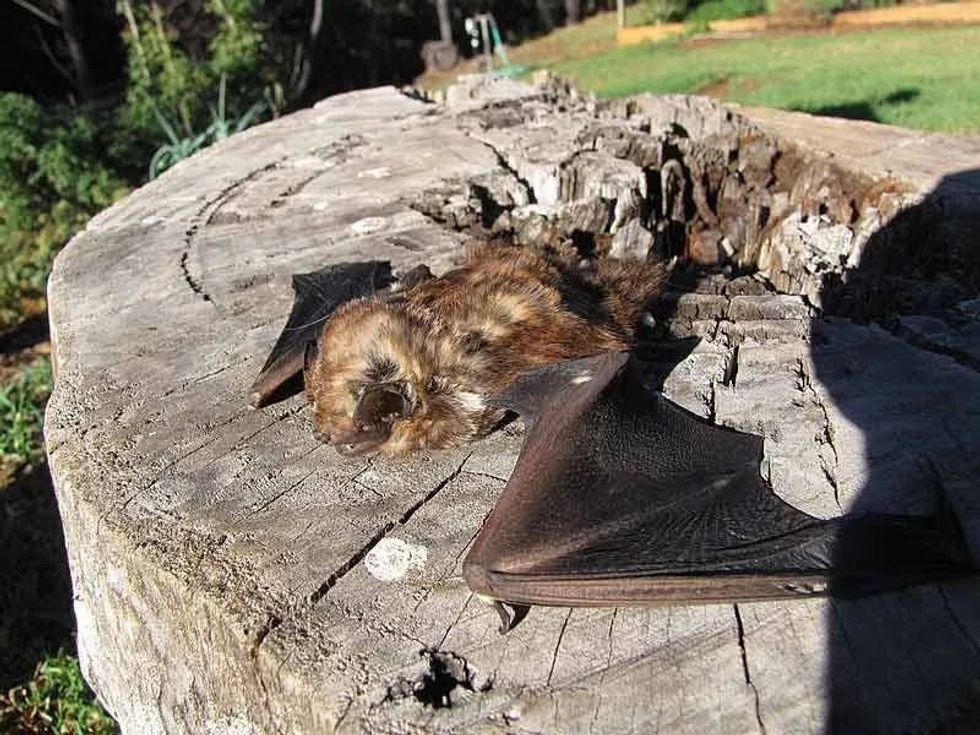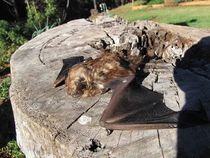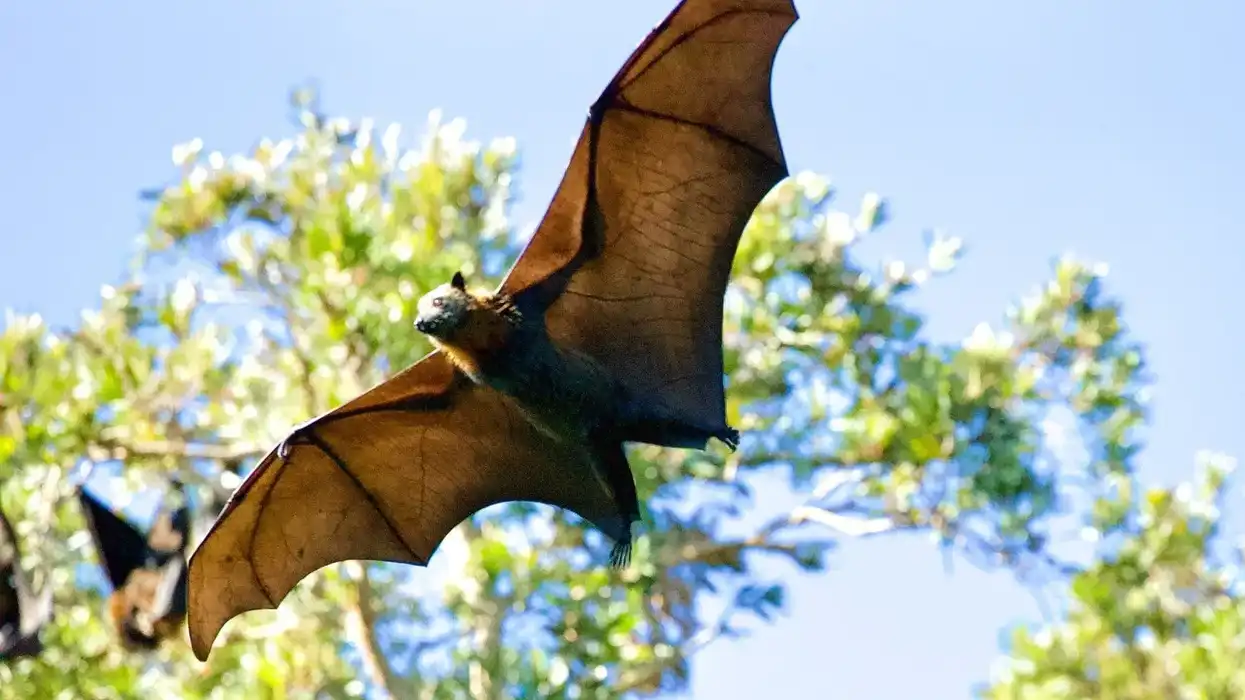Named after its distinctive “frosted” fur, the Hoary Bats are the hairy-tailed bat and they are amongst the largest bat species normally found in Canada and the United States. Their scientific name is Hoary Bat Lasiurus Cinereus.
They possess a coat of dark brown color with silver frosting on their back. Hoary Bats have long and narrow wings. Hoary Bat Lasiurus Cinereus normally prefer to roost alone on trees, hidden in the foliage, while occasionally venturing in caves with other bats.
They are important because they migrate as they form groups covering a long distance, spending the winter at one place and then moving to another. They are the only mammals known to have reached Hawaii.
The Hawaiian Hoary Bat is considered endagered because of population decline. Their migration activities can be divided into two seasons. One is autumn migration, and the other is spring migration.
If Lasiurus Cinereus hoary bat has attracted and roused your interest, scroll ahead to learn some fun facts about the hoary bat. After reading the Hawaiian Hoary Bat facts, you may also look at vampire bat facts and common wombat facts.
Hoary Bat Interesting Facts
What type of animal is a Hoary Bat?
A Hoary Bat is a species of bat belonging to the class Mammalia. It is a member of the vesper bat family (Vespertilionidae). They are quite easily found in North America.
What class of animal does a Hoary Bat belong to?
Mammals are organisms that possess mammary glands anatomically designed for nourishing the young ones. Hoary Bats are mammals who are predominantly found in Canada and the United States.
How many Hoary Bats are there in the world?
Hoary Bats are the most widespread bat species in North America. According to sources, these bats are spread across all 50 states of United States and hence do not require any dedicated conservation efforts.
Where does a Hoary Bat live?
Hoary Bats prefer trees and tall structures. However, they are also found in urban and suburban areas such of North America as in trees in open wooded glades, heavy forests, and shade trees. Their winter hibernation sites are not known precisely but it is speculated that the hibernation sites include desolated building, and hollow trees.
What is a Hoary Bat's habitat?
The temperature of the regions inhabited by hoary bats includes tropical and temperate. Whereas the Terrestrial Biomes preferred by these organisms include desert, dune, savanna, forests, and grasslands. This is the reason that these bats are primarily concentrated in North America.
Who do Hoary Bats live with?
The North American Hoary Bats generally prefer staying in isolation, however, occasionally, they do wander along with other bats.
How long does a Hoary Bat live?
The Hawaiian Hoary Bat has an average lifespan of about six to seven years. These North American Bats are present across all major states in the United States as well as in many regions of Canada.
How do they reproduce?
As of now, there is no full documentation of the process of reproduction in Hoary bats. However, the Hoary bats are believed to mate during the migration activities in autumn or in their wintering regions. The courtship between the males and females is believed to proceed during day flights. Copulation is followed by delayed fertilization.
The stored sperm is used later during ovulation in females, which takes place in the spring. The sperm is activated and used to fertilize the egg. Following fertilization, parturition takes place from the middle of May into early July.
Not much is known about the bat's gestation time. They can give birth between one to four baby bats. Usually, female bats of this species give birth to twin pups.
What is their conservation status?
Conservation status of American bats are considered as of least concern, according to IUCN as well as the U.S. Fish and Wildlife Service.
Hoary Bat Fun facts
What do Hoary Bats look like?
They are about the size of a fat mouse, the Hoary bats are distinctively marked bats with long and narrow wings. They have blunt, rounded noses, small beady eyes, and thick, broad, rounded ears.
Usually, their ears are short. The Hoary bat possess four mammary glands to provide nourishment to newborns.
The brownish fur of Hoary bats is long, soft, and thick. Their body consists of vibrant shades and tones such as dark brown, brown-gray, yellow, white, and black.
In fact, the name of Hoary Bats which means ‘frosty or ash-colored hairy tail’ comes from the coloring of the organism. The dorsal side of their body including their tail is covered with brown-gray to black fur, with a heavy tinge of white.
The shading gives these bats a frosty appearance and the combination of colors adds up to the hoary appearance.
The Hoary Bats have a distinctive yellowish-brown patch around their throat. Their ears are yellow and edged in black.
The species of Lasiurus cinereus can be easily distinguished from all others on the basis of their coloration and size. The progenies appear nearly grayish, however, they still carry a frosty appearance.

How cute are they?
Though these vibrantly colored and beady-eyed organisms may not fall under the conventional standards of cute, they definitely are grand to look at.
How do they communicate?
Similar to microbats, the hoary bats use echolocation while flying. When disturbed they tend to make a shrill, hissing sound. However, they are the only sole members of Vespertilionidae which makes an audible chatter during flight.
How big is a Hoary Bat?
The Hoary bats have an average length of 13 - 15 cm and the wingspan is 43cm.
How fast can a Hoary Bat fly?
The Hoary bat can fly at a speed of 13mph.
How much does a Hoary Bat weigh?
The average weight of a Hoary bat is about 20 - 35 g.
What are their male and female names of the species?
As the Hoary Bat belongs to the family of bats, a male Hoary Bat is referred to as ‘male bats’ while females are referred to as ‘female bats’.
What would you call a baby Hoary Bat?
The babies of the Hoary Bat are referred to as a 'pup'. The Hoary Bat is believed to give birth to twin pups at a time quite often, which is quite rare amongst bats.
What do they eat?
The primary diets of Hoary bats include insects, as they are insectivorous mammals. However, on rare occasions, they are known to survive on leaves, grass, shed snakeskin, and eastern pipistrelles.
Do they bite?
Yes, the Hoary bat does bite. In fact, the Hoary Bat can cause great damage with its large teeth, when disturbed.
Would they make a good pet?
Hoary bats are not considered to be a good option as pets. Most bats avoid human contact and are not generally aggressive, however, some species like Hoary bats fall amongst a category of posing a meager but possible threat. They have large teeth that can puncture skin if they are handled improperly. They don't really appreciate human contact.
Did you know...
The hoary bat is among the category of the largest bat found in Canada.
Hoary bats are also popularly known as the Hawaiian hoary bat.
Contrary to most other animals with characteristic features of echolocation, the sounds generated by the hoary bats are audible to humans.
Why Are Hoary Bats Endangered?
The hoary bats are particularly listed as threatened or endangered, yet they face fatal threats from wind turbines. Hoary bats and other migratory species are suffering significant mortality by taking massive hits from wind farms falling along their migration routes.
According to the report in 2005, about 40% of the total injured or dead bats were hoary bats; the fatalities were caused due to wind turbines.
Migrating bats are usually struck by the fast-moving blades of the wind machines. Often the bats are attracted to these tall structures, possibly mistaking them to be trees that can be used for rest.
Migration And Hibernation Cycles
Hoary bats are quite a wandering creatures at times, these mammals may migrate hundreds of miles and can be found in almost every state in the U.S. Hoary Bats show this unusual behavior of migrating as well as undergoing hibernation.
Here at Kidadl, we have carefully created lots of interesting family-friendly animal facts for everyone to discover! Learn more about some other mammals including Mexican free-tailed bat, or Chinese hamsters.
You can even occupy yourself at home by drawing one on our Hoary Bat coloring pages.









